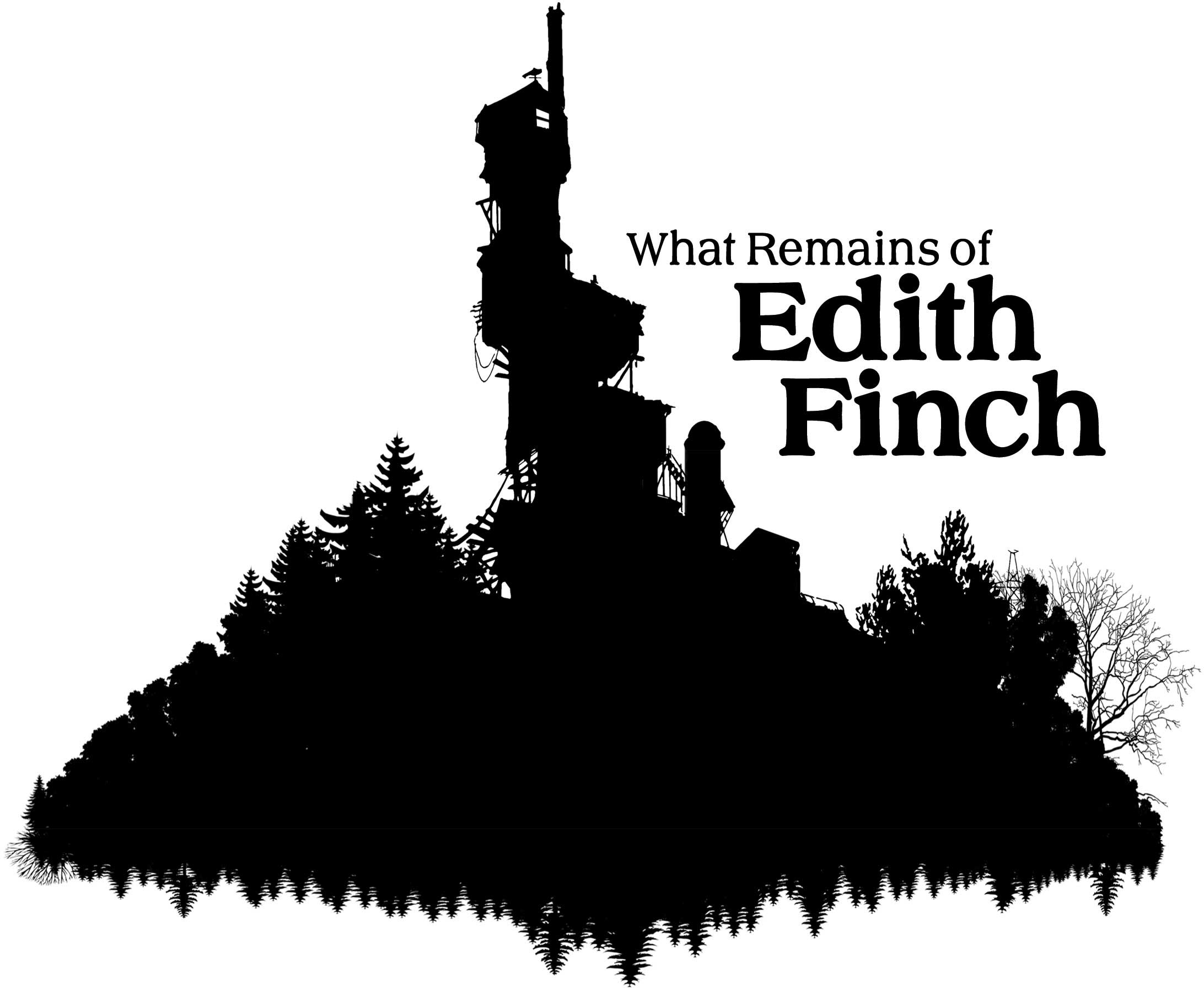
Article by Alyx Jones
Developer: Giant Sparrow
Composer: Jeff Russo
Sound Design: Steve Green (Lead), Eduardo Ortiz Frau (Add.),
Chuck Russom & Ryan Collins
Audio Programmer: Johann Ly
Voice Actors: Valerie Rose Lohman
Reviewed on: PS4
What Remains of Edith Finch from Giant Sparrow (The Unfinished Swan) has been a long awaited release since it’s first showcase at EGX in 2016, of an Owl hunting rabbits, morphing into a Shark and rolling down a hill, that intrigued a fair number of players at the time. Radio silence followed for many months, with hardly any information available online except for a title and logo, until eventually this year we got a glimpse of a trailer as pre-orders opened for the game. The story follows the Finch family through a number of obscure tragedies, as we explore an eerie family home in search of the possible curse, lurking in the gene pool. While the game isn’t a horror title, it certainly can be quite abstract and creepy, with lots of paralysed eyes watching you through masks, pictures and figures, wherever you look.
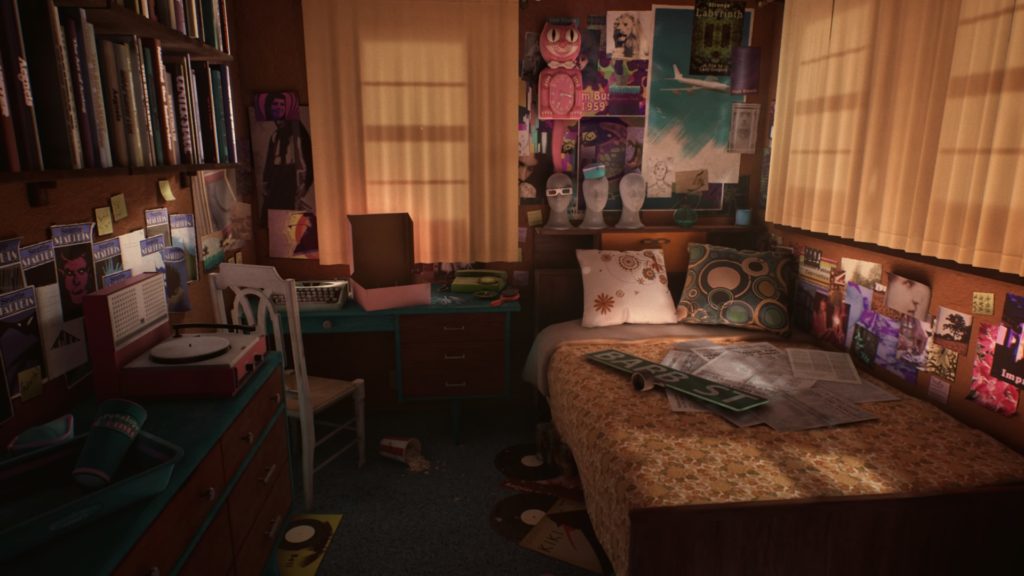
Music
TV and Film Composer Jeff Russo (Fargo) was chosen to work on Edith Finch. It’s a shame to not see Joel Corelitz return after his great work on previous title The Unfinished Swan from Giant Sparrow, considering the many references and narrative connections between the two games, and Corelitz’s dedication to creating interactive scores, particularly in video games. This may be due to the difficulty faced in production as the game was originally due to be published by Sony and Russo was brought in by Sony’s Music Department before the sale of the project to Annapurna Interactive.
Russo comes from a Film and TV background so it’s not surprising that he takes a thematic approach but had to adapt his way of working to suit the interactivity of games. Russo said his biggest challenge was figuring out where to loop the score so it sounded continuous rather than repetitive. As an exploration based game with a heavy emphasis on narrative, it might have been nice to see a more adaptive approach to the music on the whole. However, there are some really cool places in the game where the music becomes an interactive part of the experience. The first of these is that you can wind the music box in the hallway to play the theme song, that is a key part in progressing through the story. The second is when Lewis is living out his fantasy game and navigating a ship through treble clefs and notes, that only play if/when you sail through them.
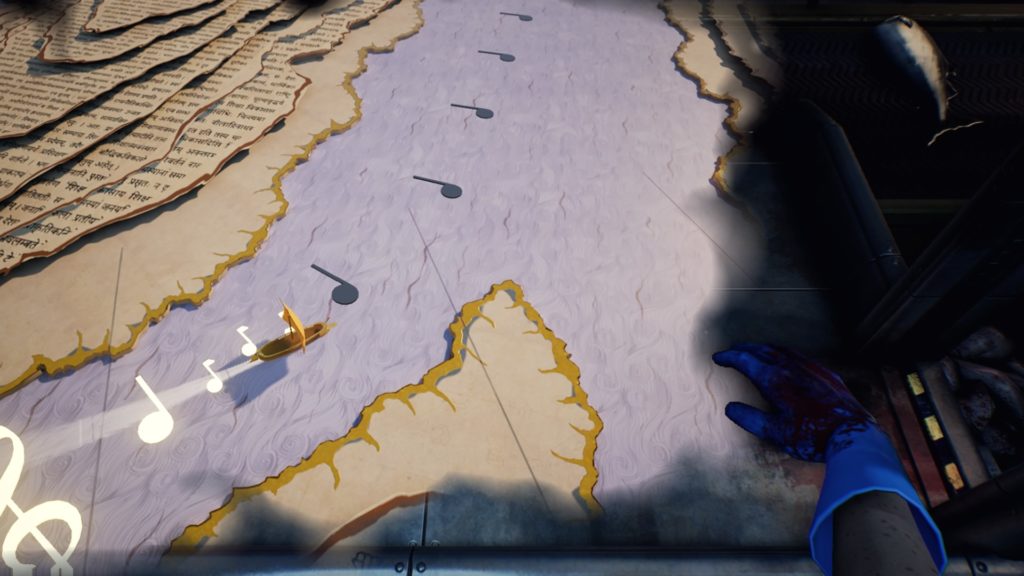
As most composers will know, silence is just as important as when music is playing and there is an absence of music when you’re exploring the house, going from room to room, looking for clues. It often feels very eerie as the house can be silent apart from your own footsteps. When you interact with objects, music is often brought in, to underscore the narration and direct the emotional undercurrents of the story. Drones and strings create effective ambience and atmosphere throughout gameplay, creating mystery, but also feels unsettling in places, for example when you follow Molly’s story.
Sound Design
When you start the game the first thing you really hear are your footsteps on your walk up to the house. It becomes apparent that as you walk the pace of the footsteps for the speed you are walking feels a little fast and the individual steps feel a bit robotic, perhaps because the intervals between steps is too regular and in reality might vary in length. Sadly, it doesn’t quite feel like a normal person walking. Once you get to the house you then walk up a wooden staircase, and at this point there is then only one footstep sound that plays, rather than one for each step, and it doesn’t sound like a wood impact either. Since player movement makes up quite a large portion of gameplay, it needed more polishing.

Steve Green (Abzu) and Eduardo Ortiz Frau (The Stanley Parable) add to the tense atmosphere with the sounds of shuffling and floorboard creaking around the house, in other rooms, just beyond our reach. In Edith Finch’s (senior) bedroom there are many metallic, clattering and chiming sound effects, even though the room is still with no wind blowing through, and the bird cages where the sounds seem to be coming from aren’t moving. It feels very much like there is presence in the environment, despite your solitude in returning to the family home. In Molly’s story, you become a variety of different animals, and the sounds of crunching on rabbit bones, tearing a seal tail off and slithering around as a giant snake feels real and sounds as awful as it should!
There is one particularly poignant death, of the baby Gregory who dies playing in the bathtub, due to a lack of attention from his mother. A fantasy about a wind up frog he is playing with, is a constant in his story, and when his story is over, the sound of the frog croaking crosses through the “fourth wall” into your living room, and gives a final croak in your hands, through the Playstation controller’s speaker. It’s the only time in the entire game where the controller sound is used, so really stands out unexpectedly, but is very effective in you feeling a part of his sad ending.
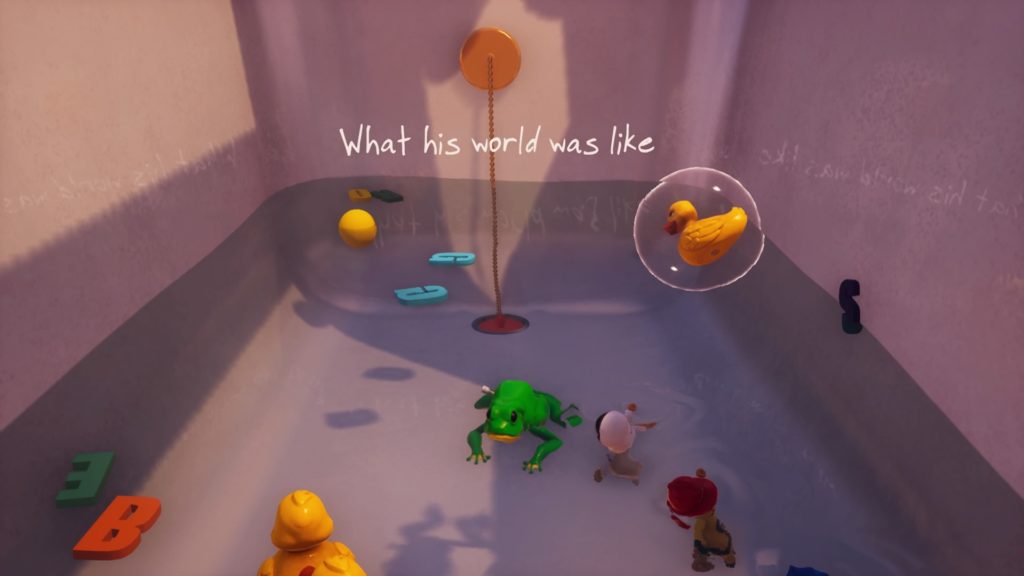
Voice Acting
Young voice talent Valerie Rose Lohman takes the main role of Edith Finch (junior). Her performance really blew me away for such a new face to the industry. She really encapsulates the character of young Edith Finch and her journey to uncover her families secrets. The storytelling through the voice of Edith is so key to the success of the game, and Lohman captures her characters vulnerability and curiosity in every line.
When you are exploring Barbara’s room you end up reading/playing through a comic book narrated by a pumpkin called “Old Jack”. His voice is such an effective mix of demonic growls and comedy/theatrical voicing that it really drew me into the story, while keeping me on edge through every page turn.
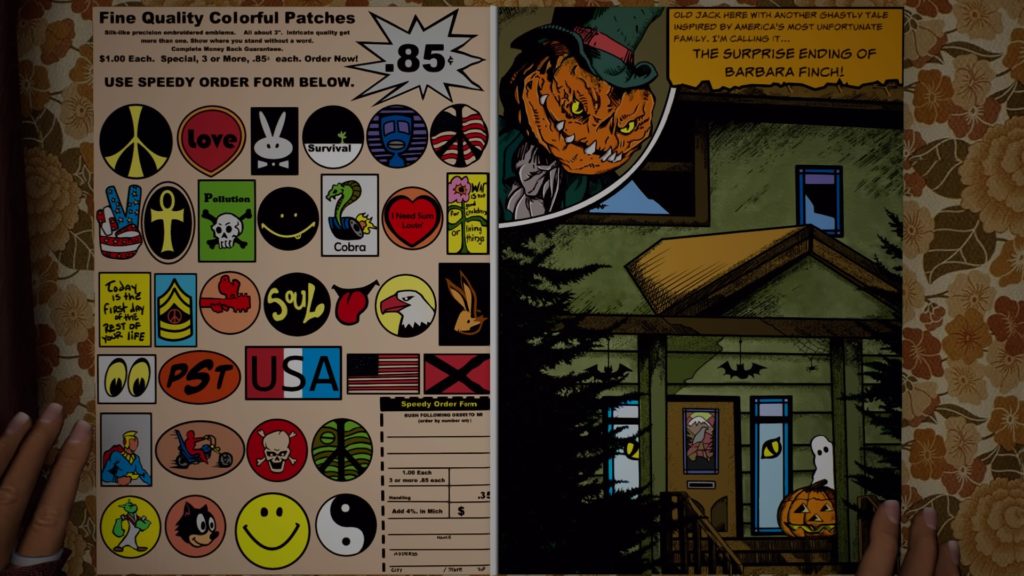
Overall the game is really very good, despite a few unpolished elements to the audio, it does sound great. You will really enjoy this game if you enjoy narrative driven, exploration games, such as Everybody’s Gone to the Rapture and The Vanishing of Ethan Carter. While sound design and music occasionally overpowers the narration, (such as in the crowning sequence) on the whole the voice acting shines through to tell this unusual story of the remaining Finch family.
LINKS
Official
We hope you enjoyed Alyx’s review, check out others in our Reviews section. Don’t forget to sign up to our Monthly Newsletter to make sure you don’t miss out on our reviews and interviews.
We’re also running a Patreon campaign to make sure we can keep bringing you regular, high quality content if you’re feeling generous! Thanks for even sharing!
The Sound Architect




